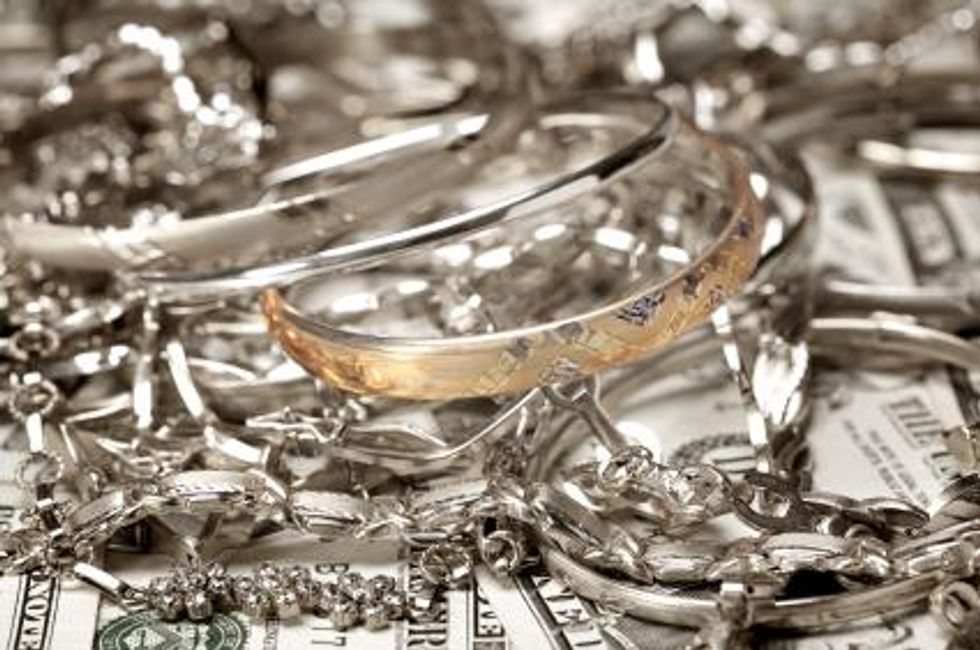Market participants are increasingly looking for growth in the silver jewelry market.
Following reports of strong sales during the holiday season, market participants continue to express optimism about the outlook for silver jewelry demand.
Holidays are extremely important for those in the jewelry business, and a January press release from The Silver Institute states that silver jewelry put up a strong performance this past holiday season.
In February, HSBC analyst James Steel announced that the firm had raised its 2013 and 2014 price forecasts for silver, in part due to an improved outlook for jewelry demand.
After several years of decline, jewelry demand appears to be stabilizing, Steel explained.
Steel’s observation is in line with expectations from Thomson Reuters GFMS, which projected last year that silver jewelry sales would recover in 2012.
The appeal of silver jewelry
The popularity of silver jewelry stems largely from the price of the metal. Relative to other precious metals, such as platinum and gold, silver is cheap. For a long time, that made it difficult for both consumers and businesses to connect the white metal with quality and luxury. But a notable shift in sentiment occurred following the recession, when many households were more price conscious.
As part of a 2010 survey, Rapaport Magazine asked businesses, “[d]o you stock silver-and-diamond fashion jewelry and how are your customers responding to it?” Some businesses were clearly reticent.
“We’re an upper-end store,” Lou Cervini, co-owner of Christopher’s Fine Jewelry, pointed out. He said that the use of silver is all about reducing gold weight and decreasing quality for the sake of matching price points.
“As far as we know, our customers have not asked for it and as far as we anticipate, they will not be asking for it,” Cervini said.
But several of the businesses that had ventured into the space revealed that doing so is worth the risk.
Mark Leigh, owner of Leigh Jewelers, said “[m]y attitude was one of reluctance initially because I thought it might lower the store, yet the success ratio and the profits and the customer who didn’t walk out of the store without something in his hand convinced me that it was the viable thing to do.”
Recognizing that economic conditions have carved out a market for price-sensitive jewelry shoppers, many in the industry have stepped up with more innovative and appealing lines of merchandise that have since become profitable.
Further, consumers are not the only ones who are finding financial appeal in silver jewelry. Silver can offer businesses more attractive margins than items crafted from the costlier metals.
Tiffany (NYSE:TIF), for example, is widely known as a luxury retailer, but lower-priced silver jewelry accounts for a quarter of its sales, according to Reuters.
In November, Tiffany lowered its sales and profit forecasts. The move was prompted in part by weak sales of high-margin, inexpensive silver jewelry. The Americas are Tiffany’s largest market, and the sales decline that the company experienced in the region was “entirely attributable to silver jewelry costing less than $500, its most profitable merchandise,” said Reuters.
Asia provides a quarter of Tiffany’s business and a weaker sales there were also a factor in the company’s lowered forecasts.
Last month, Reuters said that Tiffany’s outlook for sales growth this year is based on exactly these two factors: a more compelling selection of lower-priced silver jewelry and growth in Asia.
Silver jewelry demand
China is one of the world’s top silver consumers and its fondness of the metal apparently extends beyond investment interests and manufacturing. From 2002 to 2011, China’s silver jewelry market grew 211 percent, according to The Silver Institute.
This growth has been attributed to exposure across the country’s interior. Urbanization is expected to continue fueling expansion as more retail jewelry outlets open in major Chinese cities.
However, while Asia, with its growing middle class, is a source of optimism, western markets are still important for those in the silver jewelry business.
When demand dropped 4.5 percent in 2011, Thomson Reuters GFMS said the losses were greatest at the mass-market level due to sluggish consumer spending in western markets, silver’s high prices and elevated volatility. Then, forecasting a recovery for silver jewelry demand in 2012, GFMS pegged its optimism chiefly on the ongoing recovery in US economy.
The consultancy also noted that higher gold prices should outweigh the negative of higher silver prices.
In many places, this prediction may prove to be true, but in India, the rupee is struggling against the dollar. Silver prices have risen 33 percent in two years, and The Economic Times has noted that the increase has taken a toll on silver jewelry demand.
“There is hardly any demand in the domestic market for silver jewellery, statutes and utensils. High price is the main factor that has led to a decline in demand,” said Suresh Hundia, managing director of Hundia Exports.
Tribal women used to wear heavy silver jewelry, but prices and urban exposure are beginning to change their taste. They now prefer lightweight silver jewelry, Hundia said.
But India’s Gems and Jewelry Export Promotion Council (GJEPC) is optimistic about silver jewelry exports, which it expects to rise 25 to 30 percent this year, according to Reuters. The organization’s growth forecast for other categories of jewelery exports is only about half of that amount.
Like Thomson Reuters GFMS, the GJEPC is looking for strong demand from the US and for silver to capture market share from gold, especially among young consumers.
Silver jewelry and silver prices
Improvement in the jewelry market is positive because it provides a source of support for silver; however, for now, it is unlikely to have a significant impact on prices. That’s because lately, silver has been acting more as a monetary metal than as an industrial material, meaning that silver prices have been tracking gold prices.
Also, jewelry represents a small portion of overall silver demand; it is commonly considered a segment of the larger fabrication demand category. And there is an increasing amount of silver hitting the market that needs to consumed.
Tiffany reported that during its 2011 fiscal year, 69 percent of the silver it used came from the Bingham Canyon copper mine, with the remaining 31 percent coming from recycled supply in the US.
Both categories of supply are growing. Mine supply has increased every year of the 21st century, and 2013 is not likely to be an exception, according to Steel. The amount of recycled silver available has also been increasing in recent years, and that too is expected to continue in 2013.
Securities Disclosure: I, Michelle Smith, do not hold equity interest in any companies mentioned in this article.




